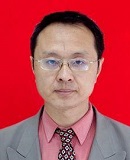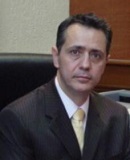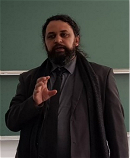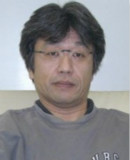主题演讲人
The Committees of SSPHE 2019 takes effort to invite outstanding speakers consistent with the goal of making SSPHE reflective of the high standards of excellence. Experts in the area of Social Science, Public Health and Education are welcome to join the conference. In principle, the applicant should be above associate professor, researchers, and engineers.
If you would like to deliver a keynote speech in SSPHE 2019, please send your latest CV, speech title, abstract to info@ssphe.org

Ha Sau-Ching Amy
Professor
Department of Sport Science and Physical Education, Faculty of Education, The Chinese University of Hong Kong, China
Title:Bridging contexts, empowering individuals: Physical activity promotion and education for young children and their families
Abstract:
An urban lifestyle and recent technological advancement inevitably come along with substantial screen time with our daily lives. Such a sedentary lifestyle incurs obesity and multiple health issues (e.g., coronary heart disease, Types 2 diabetes), posing a worldwide public health concern. For example, as a typical urban city, Hong Kong is described as being very fast paced with school work, job demands, and provision of quality services. Young children living in Hong Kong hence compromise their time and opportunities on physical activity, which may be one of panaceas combating against adverse effects from the sedentary lifestyle. Based on a current study (Ha & Ng, 2015), only approximately 10% of students in Hong Kong followed the guidelines of World Health Organization and stayed active for 60 minutes a day (World Health Organization, WHO; 2010). To tackle with physical inactivity as a pressing societal issue, the author and her research team recently developed two intervention programs for primary school students in Hong Kong (i.e., “Active 1 + Fun”, Ha et al., 2019; “Fun to Move@JC”; Ha et al., 2017). Guided by Self-Determination Theory (SDT; Ryan & Dec, 2002) and Social Ecological Model (SEM; Sallis et al., 2006), the intervention programs serve multiple purposes: 1) to promote physical activity in students by encouraging, educating, and empowering parents and teachers using state-of-the-art technology (e.g., making good use of mobile apps and sport band electronically documenting one’s physical activity levels; adding effective curriculum elements to develop Quality Physical Education, QPE; United Nations Educational, Scientific and Cultural Organization, UNESCO, 2015); 2) to connect and collaborate with multiple stakeholders in communities (e.g., schools, parent teacher associations) in order to initiate and promote a positive behavioral change in physical activity in students and parents (e.g., to increase in time spent on physical activity everyday through assigning “physical activity homework” to both parents and students); 3) to start building up a big data platform for public health and social sciences research outputs. Extensive research data has been collected from parents and students from these two intervention projects. Preliminary findings and implications on policy making at school levels will be discussed.

Shuo Zhao
Professor
Xi'an University&Northwestern Polytechnical University, China
Title:European Bilingual Education Policy and Model in Bologna Process
Abstract:
First it will introduce CLIL education policy in EU (Content and Language Integrated Learning). Then development of bilingual education in EU will be discussed. Based on bilingual education model curriculum design of bilingual education in European Union is expounded with case analysis of bilingual education in Luxemburg and France. Evaluation on bilingual education will be put forward at last.

Martin P. Pantoja-Aguilar
Professor
University of Guanajuato, Mexico
Title:Indicators of academic performance as predictors of raising financial resources
Abstract:
This study was conducted on State Public Universities (SPU) in Mexico to determine the possible existence of a correlation between their performance in their indicators of academic excellence and the level of allocation of financial resources obtained from the main sources of funding by the federal government. By means of the determination of the academic and financial indicators used by the main international and national organisms, a methodological proposal of statistical analysis was constructed to evaluate the academic performance of the SPU and its correlation with the attainment of financial resources. The results showed that there is insufficient evidence to infer that obtaining better academic results in Mexican SPU is a reliable predictor to obtain greater financial resources. This demonstrates the need for a clear policy in the allocation of resources to institutions.

João Gilberto Mendes Dos Reis
Professor
Universidade Paulista, Brazil
Title:How Decision-Making has Influenced Soybean Production And Exportation: An Analysis Considering Marketing, Production, and Logistics
Abstract:
World population is expected to reach 8.5 billion by 2030 (UN, 2017) which predicts the global commodity market to grow worldwide. One of the primary global commodities is soybean. Brazil and The US are the major producers and exporters while China is the main market.
Brazil has the highest growth in crop area, production volume, and international trade share of soybean. Currently, the country is the world’s largest exporter. In 2017/2018 harvest accounted for 119.5 million tons, of which 76.7 million were for exportation, covering 35.10 million hectares (USDA, 2018).
Despite this numbers, Brazilian soybean growers report enormous challenges such as scarcity of transportation logistics and storage capacity; long distances between the production areas and the ports used for export; the strong dependence on imported fertilizers, environmental, social, and economic impacts on food production and broad land use to increase the production.
Considering the number of variables that influence the behavior of the soybean complex, decision-making is a core issue in agricultural management. This presentation intends to discuss soybean complex and showed how marketing, production, and logistics affect soybean decision-making. During the speech will be present a scenario of global soybean production and exports, and a field research with Brazilian growers and Specialists using a multicriteria decision model to evaluate decision-making around soybean production and exports.

Hiroshi Suzuki
Professor
National Research Center for Protozoan Diseases, Obihiro University of Agriculture and Veterinary Medicine, Japan
Title: Potential of the Induced Vitamin E Deficiency in Malaria Infection
Abstract:
Nutrition might be one of the numerous biological, immunological, and ecological factors that influence the adaptation of human population to malarial infection. Although vitamin E deficiency may cause abortion, neurological dysfunction, myopathies, and diminished erythrocyte lifespan, epidemiological and experimental studies have suggested beneficial effects of vitamin E deficiency on malaria infection. However, it has not been clinically applicable for the treatment of malaria owing to the significant content of vitamin E in daily food. Since α-tocopherol transfer protein (α-TTP) has been shown to be a determinant of vitamin E level in circulation, however, manipulation of vitamin E levels by α-TTP inhibition was considered as a potential therapeutic strategy for malaria. Knockout studies in mice showed that inhibition of α-TTP confers resistance against malaria infections, accompanied by oxidative stress-induced DNA damage in the parasite, arising from vitamin E deficiency. Combination therapy with chloroquine and α-TTP inhibition significantly improved the survival rates in mice infected with malarial parasites. Thus, clinical application of vitamin E deficiency could be possible, provided that vitamin E concentration in circulation is reduced. Probucol, a recently found drug, induced vitamin E deficiency in circulation and was effective against murine malaria. Currently, treatment of malaria relies on the artemisinin-based combination therapy (ACT); however, when mice infected with malarial parasites were treated with probucol and dihydroartemisinin, the beneficial effect of ACT was pronounced. Plasma vitamin E reducing drugs like probucol might be a candidate for beneficial prevention strategy for travelers from malaria-free area.

Shirley S. Ho
Associate Professor
Nanyang Technological University, Singapore
Title: Scientists and Social Scientists as Public Intellectuals: Encouraging Higher Education’s Research Outreach and Engagement with the Public
Abstract:
Public engagement by scientists and social scientists can help to inform policies, advance democracies, and boost civil discourse. This talk will explore the macro-, meso-, and micro-level motivations and barriers of public engagement among scientists and social scientists in Singapore. Based on a large-scale, probability-based survey (N=706) and 8 focus group discussion sessions with scientists and social scientists in Singapore, this talk will highlight the importance of distinguishing public engagement into three dimensions: public engagement via mass media, public engagement via face-to-face platforms, and public engagement via social media. While the three types of public engagement shared some common antecedents, notable nuances emerged. In general, personal attributes of the scientists and social scientists were significantly associated with their willingness to carry out public engagement, while the external context played a less significant role in shaping their willingness to carry out public engagement. Perceived behavioral control, past behavior, trust in media, and demographic variables were significantly associated with some dimensions of public engagement. The talk will conclude by discussing the current state of public engagement in Singapore, propose suggestions on how to advance the state of public engagement, and discuss theoretical contributions and directions for future research.

Wenling Liu
Associate Professor
Beijing Institute of Technology, Beijing
Title: Public Defensive Behaviors against Air Pollution: Evidence in China
Abstract:
Air pollutants have been widely proved to be harmful to human health by various academic studies. Being faced with severe haze in many areas of China, the residents have become more and more concerned with potential health effects of air pollution and started to adopt defensive behaviors at the individual level. In the short term, individuals may reduce or even stop outdoor activities. In the long run, residents can sort into places with better air quality, taking into account a large array of location attributes and individual preferences like medication usage or air purifier use. The pollution-averting activities reflect individuals’ trade-off between the cost of the preventive measures and the benefits of the reduced pollution exposure. However, scientific cognition about the effects of these pollution-averting activities is quite limited in China. These emerging defensive behaviors might lead to unexpected health effects and social inequality issues. This paper aimed to examine what kinds of defensive behaviors have been adopted, what are major driving forces and the potential social effects of these behaviors. The research established a theoretical framework based on Protection Motivation Theory (PMT) and Social Practice Approach (SPA), and collected data via a national wide random questionnaire survey. The results found that residents have adopted diverse defensive measures or behavioral adjustments to adapt the pollution situation in China. Adoption of these defensive behaviors was significantly driven by household income level. Higher-investment strategy and more precautionary measures were more likely adopted in higher income group; an econometrical analysis also proved the significant role of household income. Individual perception for pollution risks and adaptation efficacy also presented as key drivers of public defensive activities. Confidence in government showed reverse effects on private investments on pollution-averting products. In general, residential defensive measures would be beneficial to individual health; however, it would also increase residential electricity demand (due to the use of purifiers and ventilation systems), and potentially, health inequality might be aggravated in this process.



